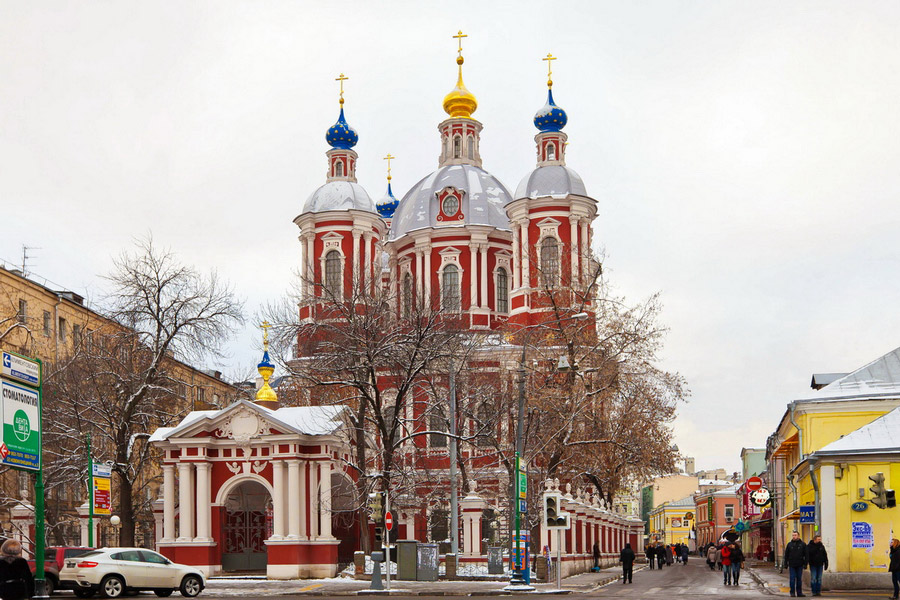
St. Clement's Church in Moscow, one of the capital’s most well-known houses of worship, boasts of colorful, unusual architecture and close historical ties to the formation of Russia.
Back in 1597, the first map of Moscow showed an unassuming chapel in Zarechye neighborhood at the site of the present-day St. Clement’s Church, and additional documents dating to the early 17th century confirm its presence. At that time the district boasted of a diverse population, including many international merchants who are believed to have funded construction of this original wooden St. Clement’s Church.
During the 1612 Battle of Moscow against Polish-Lithuanian invaders, an important victory for the Russian army was achieved near the church. As a result, the 1st-century Saint Clement of Rome became a patron saint of the Russian army and St. Clement’s Church a symbol of the courage of Russia’s soldiers and the liberation of Moscow. The historical significance of St. Clement’s Church now firmly cemented, restoration work on it began after a truce was signed between Russia and Poland in 1618.
In the latter half of the 17th century, a nobleman named Alexander Durov was imprisoned and sentenced to death after being falsely accused before the Tsar. In answer to his prayers, his execution was miraculously overturned and in a show of gratitude, Druov built a stone church with an altar on site of St. Clement’s Church. Around 1657, the original wooden church was completely replaced with a stone sanctuary, with space provided to accommodate a second altar.
In 1698, countless soldiers suspected of participating in the infamous Streltsy Uprising were massacred by Peter I. A number of these men had lived in Zarechye, and in their stead a stream of wealthy businessmen began to settle in the area. It was the donations of these well-to-do newcomers that kept St. Clement’s Church afloat and allowed it to be renovated several times before being consecrated anew in 1720.
In the 1750s, a refectory and bell tower reflecting popular Russian architecture of the time were added to the church. In subsequent years, a rich entrepreneur connected to the Imperial Academy of Arts funded additional renovations, while the ensuing decades saw the donation of eight large bells from parishioners. St. Clement’s Church had become the pride of the community and was named one of the five most beautiful churches in Moscow.
The church’s modern appearance reflects the late Baroque style with Rocco elements and was not acquired until the 18th century. Five domes rise above the red two-story structure, the largest one plated with gold and the others painted blue. The church is ornately decorated with columns and stucco, as well as carved iron grilles on the roof of the second tier.
Time and circumstance have taken a toll on St. Clement’s Church. The Fire of 1812 damaged its exterior and roof. Church utensils were stolen in subsequent looting, although its books and icons were preserved. In Soviet times, most of these icons and holy items were confiscated, services were banned and the church transferred to Lenin State Library for the storage of archives. Services were not reinstated until 2005, and the cathedral transferred back to the Russian Orthodox Church three years later.
Although many of Russia’s historical churches have been destroyed, St. Clement's Church in Moscow has survived with much of its dazzling original interior intact. Just as it has defied the odds of a turbulent history, its design and décor also defy architectural norms in the region and are sure to impress believers and skeptics alike.

